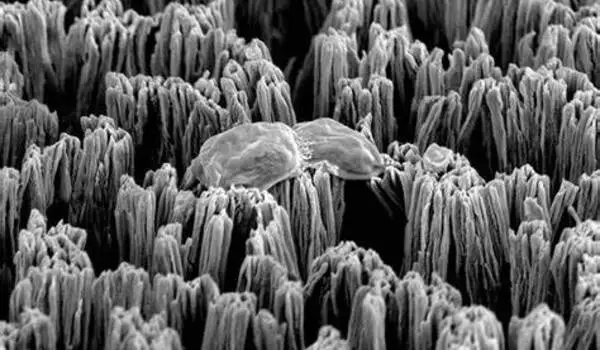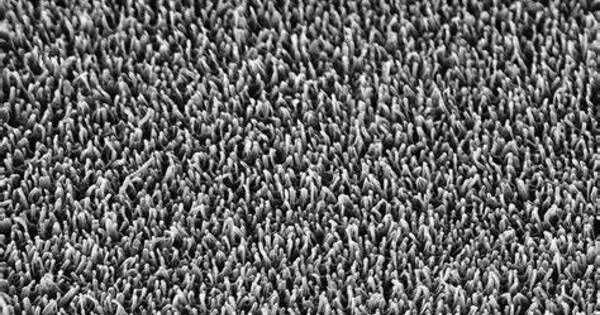Titanium micro-spikes are not designed to skewer superbugs or germs. While titanium is well-known for its hardness and durability, it is not an effective instrument for directly battling or skewering bacteria or superbugs, which are often minuscule creatures. Superbugs are bacteria types that have gained resistance to various antibiotics, making treatment difficult. The most frequent method of combating superbugs is to utilize medicines that are still effective against them, in conjunction with infection prevention measures such as basic hygiene and infection control techniques.
A recent study reveals that rough surfaces inspired by bacteria-killing spikes on insect wings may be more efficient than previously thought at combating drug-resistant superbugs, including fungus. Global health professionals are concerned about the rising rates of drug-resistant illness.
To prevent infection around implants, such as titanium hips or dental prostheses, surgeons utilize a variety of antimicrobial coatings, chemicals, and antibiotics. However, these do not block antibiotic-resistant bacteria and may even enhance resistance.
To address these issues, RMIT University researchers created a pattern of microscale spikes that can be etched onto titanium implants or other surfaces to provide effective, drug-free protection against bacteria and fungi.
This latest study suggests that it may not be entirely necessary for all surfaces to eliminate all pathogens immediately upon contact if we can show that the surfaces are causing programmed cell death in the surviving cells, meaning they die regardless.
Dr. Denver Linklater
The study, published in Advanced Materials Interfaces, examined the effectiveness of the changed titanium surface in eliminating multidrug-resistant Candida, a potentially lethal fungus responsible for one out of every ten hospital-acquired medical device infections.
The specifically engineered spikes, each approximately the size of a bacteria cell, quickly destroyed about half of the cells. Notably, the other half that was not instantly destroyed was made unviable due to the injuries received, unable to reproduce or cause infection.
Dr. Denver Linklater, the study’s lead postdoctoral researcher, stated that metabolic analysis of protein activity demonstrated that both Candida albicans and multi-drug resistant Candida auris fungus cells sitting damaged on the surface were as good as dead.
“The Candida cells that were injured underwent extensive metabolic stress, preventing the process where they reproduce to create a deadly fungal biofilm, even after seven days,” said Linklater, from RMIT’s School of Science. “They were unable to be revived in a non-stress environment and eventually shut down in a process known as apoptosis, or programmed cell death.”

An earlier study published in Materialia confirmed the surface’s efficiency against common harmful bacteria, including golden staph. The recent discoveries, according to group leader Distinguished Professor Elena Ivanova, give light to the design of antifungal surfaces to avoid biofilm formation by harmful, multi-drug resistant yeasts.
“The fact that cells died soon after initial contact with the surface – some by rupture and others by programmed cell death – suggests that resistance to these surfaces will not develop,” she said. “This is an important finding that suggests that the way we measure the effectiveness of antimicrobial surfaces may need to be reconsidered.”
Over the last decade, advances in the design of surfaces that kill superbugs on touch have been made. Finding the correct surface patterns to eradicate 100% of microorganisms so that some do not survive to develop resistance is a continuous task.
“This latest study suggests that it may not be entirely necessary for all surfaces to eliminate all pathogens immediately upon contact if we can show that the surfaces are causing programmed cell death in the surviving cells, meaning they die regardless,” she explained.
Bioinspired solutions
RMIT’s Multifunctional Mechano-biocidal Materials Research Group has led the world for over a decade in the development of antimicrobial surfaces inspired by the nanopillars covering dragonfly and cicada wings. Ivanova herself was among the first to observe how when bacteria settle on an insect wing, the pattern of nanopillars pulls the cells apart, fatally rupturing the membranes.
“It’s kind of like stretching a latex glove,” Ivanova explained. “As it slowly stretches, the weakest point in the latex will become thinner and, eventually, tear.”
Her team has spent the last decade reproducing these insects’ nanopillars in their own nanopatterns, with the newest breakthrough accomplished through the use of a method called plasma etching to generate the antibacterial and antifungal pattern in titanium. According to Ivanova, the relatively easy etching procedure might be optimized and used to a wide variety of materials and applications.
“This new surface modification technique could have potential applications in medical devices, but it could also easily be tweaked for dental applications or other materials like stainless steel benches used in food production and agriculture,” she explained.
















